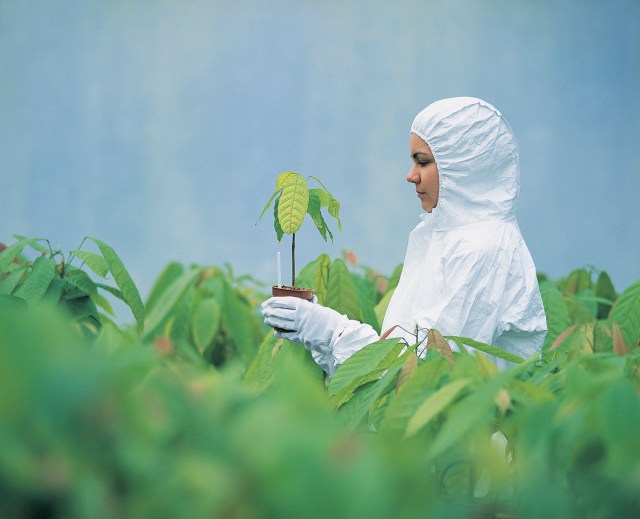Scientists are re-engineering the global food system. Steven Taylor / Getty

Imagine a company that employs 6,000 people. It’s your job to find out what they all do. The catch is that you can’t ask them directly, because you don’t speak their language. What you can do, however, is remove one of them from the workplace and observe the effects of that employee’s absence on the whole company. You can run the same experiment again and again, each time removing a different employee.
What you notice is that about a thousand of the workers are indispensable – if any one of them is absent, everything grinds to a halt. As for the other 5,000, well, the company copes – either what they were doing wasn’t that important in the first place, or their colleagues somehow step into the breach.
However, if you start removing the non-essential employees in pairs, then you find that in many cases the dual absence does cause major problems. You also notice that the dual absences that cause the biggest problems are those involving employees who work in the same department. This makes sense, as losing two members of a team is harder to compensate for than one. By removing two employees at a time in all the different combinations (of which there are millions) you painstakingly gain an insight into how the whole company works.
Unsurprisingly, this is an entirely fictional exercise in management consultancy – but one that serves as an analogy for a genetic experiment conducted 20 years ago at the University of Toronto.
The ‘company’, in this parallel, is a species of yeast and the ‘workers’ are the 6,000 genes that make up its genome.
As Veronique Greenwood reports for Quanta Magazine, the researchers created a vast number of modified strains of the yeast by removing genes one at a time and then in pairs, thereby creating single and double mutants.
She goes on to describe an intriguing twist on the original experiment. This time, the researchers took a number of the double mutant strains and knocked out a third gene (thereby creating triple mutants). The results were both expected and unexpected:
“As the scientists built their new map, several things became clear. For one, in about two-thirds of the triple mutants that showed an additional genetic interaction, knocking out the third gene tended to intensify the problems that the double mutant had.”
Obviously, if losing two members of a team is more disruptive than losing one, then losing three is more disruptive still (this is why well-run companies plan holidays carefully).
But here’s the less expected bit:
“In double mutants, the functional connections between genes tended to be tight: A gene involved in DNA repair usually had links with other genes that are also involved in DNA repair, and genes that had interactions with each other usually interacted with the same other genes. With the triple mutants, however, more far-flung tasks started to get linked together.”
It’s as if our hypothetical management consultants had discovered that the company they were studying isn’t nearly so compartmentalised as they’d first imagined. In fact, the working relationships between different members of different teams are so interwoven that seemingly unimportant changes to one team can have knock-on effects throughout the whole company.
“Joel Bader, a systems biologist at Johns Hopkins University, says that the current work suggests an intriguing connection to an idea in human genetics — that a wide array of genes may be subtly influencing traits that we don’t normally associate with them. ‘[The] closer we are able to look, the more we are able to see that perturbing one gene or pathway has effects that propagate throughout the entire system,’ he said.”
This is something that the boosters of genetic engineering need to take on board. There is, of course, no denying the power of the technology. That we can individually identify and map the genes in an ever-expanding range of species from yeast to Homo sapiens is amazing. That we can knock-out and splice-in genes with ever greater precision is a true wonder of the age.
And yet, though we know how to perform these manipulations, to a very large extent we don’t know what we’re doing.
Given the complexity of the gene machine within every cell, we’re only just beginning to understand the wider effects of each modification. That’s something worth bearing in mind as we re-engineer the global food system and before we re-write the human germline.










Join the discussion
Join like minded readers that support our journalism by becoming a paid subscriber
To join the discussion in the comments, become a paid subscriber.
Join like minded readers that support our journalism, read unlimited articles and enjoy other subscriber-only benefits.
Subscribe